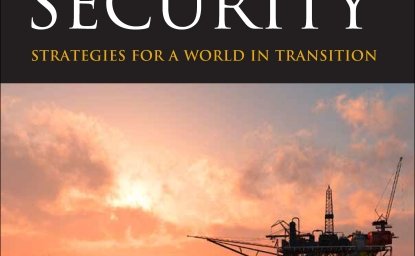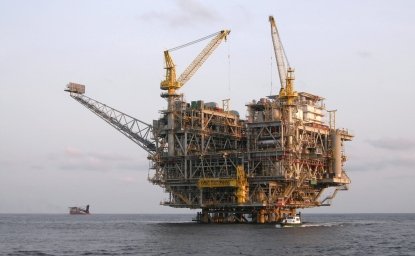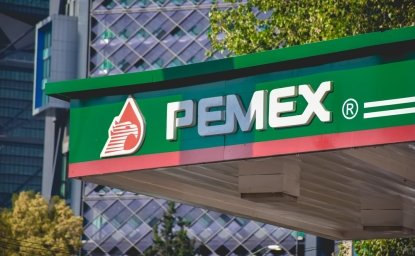Chapter 20 Update: Managing Strategic Reserves
Introduction
The paramount argument of the chapter addressing management of the Strategic Petroleum Reserve (SPR) in the 2013 edition of Energy and Security: Strategies for a World in Transition was that the United States must shift its SPR policy focus to account for contemporary global oil market realities by increasing its capacity to leverage the SPR to deter intentional disruptions of oil supply and ameliorate the economic losses incurred by the US and its allies and partners from major supply disruptions. The chapter also prescribed recommendations to maximize the SPR’s capabilities in these respects. These recommendations comprised providing for more flexibility to export SPR crude, modernizing SPR infrastructure, ensuring that the White House has staff with technical market expertise to advise policymakers when an SPR drawdown will have maximum positive market effects, and improving communication and coordination with the International Energy Agency (IEA) and non-IEA countries building strategic stocks, namely China.
The Obama Administration is undertaking several initiatives that align with the imperative of making the SPR a more effective global tool, as outlined in the Department of Energy’s (DOE) Quadrennial Energy Review (QER).[1] Most notably, the Administration succeeded in securing through the Bipartisan Budget Act of 2015 the authority to sell up to $2 billion in SPR oil to finance SPR modernization and refurbishment.[2] However, this sale, paired with additional authorized sales of SPR oil for purposes unrelated to energy security, may reduce the SPR’s stocks from 695 million barrels to 531 million barrels by 2025, (assuming 40 million barrels are sold to raise $2 billion for modernization) reducing its overall effectiveness. But the task of ensuring the basic operability of the SPR is urgent and with global spare capacity dwindling, prioritizing increased cooperation with China and other non-IEA holders of large government stocks should be at the top of our energy diplomacy agenda.
The Erosion of Oil Market Resilience to Supply Disruptions
The global oil market has undergone changes since 2013 that make sustaining the SPR as a demonstration of American power and market stabilizer more important than ever, and increasingly illustrate the need for the US to make necessary investments to maximize the SPR’s capabilities in these areas. While domestic US crude production has risen dramatically,[3] US public stock levels are very high[4] and imports from OPEC have declined,[5] the risk of global supply disruptions has risen as well and the ability of the global energy system to address them is deteriorating.
The decline in US oil imports has reduced America’s risk of loss of physical supplies of oil, but not our vulnerability to price shocks from global oil supply disruptions. The key metric today is not how many days of imports the US SPR can cover, but how robust aggregate levels of stocks – especially publicly held (government) stocks – are compared to the likely or possible disruption risks. Today, global spare capacity remains almost entirely concentrated within OPEC. OPEC spare capacity, which is held almost entirely in Saudi Arabia, has nearly halved from 2.69 million b/d in early 2013 to 1.35 million b/d currently.[6] This owes in part to efforts by Saudi Arabia and others to produce at or near record rates to protect market share in the midst of the low price cycle.[7] Looking ahead, Saudi Arabia must also grapple with rising domestic demand for oil, which could threaten its capacity to serve as a reliable supplier to the rest of the world to an extent reflective of geopolitical risk in the coming years. Saudi Arabia is currently the largest consumer of petroleum products in the Middle East, and Riyadh’s success in managing oil demand hinges on its ongoing efforts to harness natural gas and solar energy to replace oil for power generation.[8]
The other reliable means the world can leverage to respond to supply disruptions is releasing government stocks. The US SPR is in serious need of repair. The Sandia National Laboratories noted in a report released in June 2015 that concerns regarding the integrity of the SPR’s salt dome caverns are increasing as the storage caverns age.[9] In addition, the SPR cannot currently be drawn down at maximum levels in large part because of insufficient port and pipeline capacity at storage sites, resulting from changing oil flows in North America from increased oil production in the US and Canada. The QER, published in April 2015, estimates that $1.5-2.0 billion is needed both to increase the SPR’s incremental distribution capacity by adding more docking capacity at the Gulf Coast terminus of the SPR distribution systems, and undertaking life extension programs for key SPR components such as additional brine driven caverns and surface infrastructure.[10] At a global level, the IEA allows member states to meet their stock holding obligation of 90 days of import cover through both government and industry stocks. As a result, IEA Europe government stocks are equivalent to only 56 days of net import cover for the region, while IEA Asia Pacific government stocks are equivalent to 88 days of net import cover.[11] An even more acute problem is surfacing as a result of rapidly increasing non-OECD oil demand, which is eroding the amount of world oil demand cover that IEA stocks provide. While government and industry stocks provided nearly 60 days of import cover in 1990, this figure has been progressively declining and IEA forecasts they will provide around only 40 days of import cover by 2035.[12]
The Relevance of Strategic Reserves in the Contemporary Oil Market
Security of physical supply remains a serious risk for several countries, including key US allies and partners in Asia and Europe. Asian and European importers heavily rely on import volumes from the Middle East.[13] The security environment in the Middle East has deteriorated since 2013. The so-called Islamic State (IS) has carved out a de facto statelet in central and eastern Syria and western Iraq while attracting additional organized support in Egypt, Libya, Nigeria, Saudi Arabia, Yemen, and Afghanistan.[14] IS has also seized control of or sabotaged oil infrastructure in Iraq, Syria, and Libya. While the P5+1 and Iran have reached an agreement for Iran to cease the development of military components of its nuclear program in exchange for sanctions relief, Iran remains a major state sponsor of terrorism. Risk persists that Iran will use proceeds from sanctions relief to provide new financing to placate the Islamic Revolutionary Guard Corps (IRGC) and others who may have felt sidelined when the nuclear deal was reached.
Other significant risks capable of encumbering the free flow of oil from the Middle East include a potential disruption in the Strait of Hormuz, where 17 million b/d transit each day.[15] While it is not thought that Iran has the capacity to disrupt traffic in the Strait for a long period, even a shorter-term disruption could cause severe economic dislocations. An attack by any actor causing significant damage to Saudi Arabia’s Abqaiq crude stabilization plant, which has 7-13 million b/d of capacity,[16] or deepwater terminals near Iraq’s Basra region, which have a capacity of 3.5 million b/d,[17] may cause a more prolonged supply disruption due to the technical demands that would be required to bring such a facility back on line and ensure that it can resume operations in a safe environment. Both facilities were previously targeted in failed attacks in 2006 and 2004, respectively. A sophisticated cyber attack targeting key regional infrastructure could also cause a prolonged disruption in supply. A 2012 cyber attack targeting Saudi Aramco failed to bring about a major supply disruption, but it wiped clean the hard drives of over 30,000 computers and made clear that such operations pose a credible threat to Middle East energy infrastructure.[18]
Assessment of Recently Implemented and Proposed Policy Adjustments
High levels of geopolitical risk combined with declining levels of spare capacity make modernizing the SPR and its statutory drawdown authorities to reflect 21st century threats and markets an essential national security interest of the US and its allies and partners. As noted earlier, the Administration has secured budget authority through the Bipartisan Budget Act of 2015 to sell up to $2 billion of SPR oil from FY 2017 through FY 2020 to finance the newly established Strategic Petroleum Reserve modernization program. The program’s broad scope comprises operational improvements to extend the useful life of surface and subsurface infrastructure; maintenance of cavern storage integrity; and addition of infrastructure and facilities to optimize the drawdown and incremental distribution capacity of the SPR.[19] Yet this success came at a high cost. Once the door to selling SPR oil was opened, the Obama Administration acquiesced to two additional SPR sales. The first, also authorized through the Bipartisan Budget Act of 2015, provides for the sale of 58 million barrels of SPR oil from FY 2018 through FY 2025 for deficit reduction purposes.[20] The second, authorized through the Fixing America’s Surface Transportation Act of 2015, provides for the sale of 66 million barrels of SPR crude from FY 2023 through FY 2025 to help support the Highway Trust Fund.[21] In light of growing geopolitical risk, these two measures, which authorize the sale of a combined 124 million barrels of SPR crude from FY 2018-FY 2025,[22] are misguided. A greatly diminished the SPR will be interpreted by our allies and partners as a sign of US retrenchment, as the reserve is a demonstration of American willingness to remain engaged in global energy diplomacy. At a smaller size, US policymakers will be reluctant to tap the reserve other than for the most catastrophic events, adding to price volatility. A smaller SPR also deprives the IEA of an undetermined but potentially significant share of its publicly held crude oil stocks, significantly eroding a key element of resilience in the collective energy security system. As a result, the global economy (and by extension the US economy) will be much more vulnerable to severe price hikes stemming from an intentional or unanticipated supply disruption. The task of responding to such disruptions will increasingly fall to non-IEA members building up their strategic stocks such as China and India. This in effect amounts to a US move to cede the power to respond to a major source of economic dislocations to other countries.
Although current circumstances demonstrate that the international community is at greater risk of a major supply disruption today than it was in 2013, important steps have been taken to harden global resiliency in weathering the negative economic impacts of such a disruption. In line with the chapter’s recommendations, the White House has provided for the continued presence of market-savvy staff to help ensure that future SPR drawdowns are promptly timed and have the largest possible positive market impacts. In addition, in 2014 the Administration mandated the creation of the Northeast Gasoline Supply Reserve[23] to protect the Northeast against fuel supply shortages like those that occurred in the aftermath of Superstorm Sandy in 2012. Separately, Chinese efforts to fill its own strategic reserves continue, as the country seeks to add oil to six sites with a total capacity of approximately 132 million barrels over the next year and a half.[24] India has purchased at least four cargoes for its new reserve, although it will take years for infrastructure to be built out to an extent providing the country with a significant supply cushion.[25]
While much work remains to be done in modernizing the SPR so that it can better serve as a viable global energy tool, DOE recognized many of the challenges ahead in the QER.[26] The QER recommends the enactment of an SPR modernization program focusing “both on physical infrastructure and an updated statutory trigger for use of the SPR.” Its findings reveal that the SPR’s drawdown infrastructure is in even poorer condition than assumed in the 2013 chapter and, as previously noted, indicate that $1.5-2.0 billion is needed to increase the SPR’s incremental distribution capacity and implement life extension programs. The QER further recommends updating the statutory triggers in the Energy Policy and Conservation Act (EPCA) to reflect modern global oil markets and US market conditions by changing the definition of a “severe energy supply interruption” warranting a SPR release to include a supply disruption that is likely to cause a severe increase in the price of domestic petroleum products; and changing the requirement that a severe increase in the price of petroleum products has resulted from such emergency situations to a requirement that a severe price increase will likely result from such emergency situations. While some have misrepresented this as onerous price management, the fact that the existence of a severe disruption or a related serious threat is required for a drawdown indicates this is not the case. Implementation of this recommendation is essential to maximizing the ample US investment in the SPR, as the 2013 chapter demonstrated that slow US decision-making has often led to drawdowns after the most negative effects of a crisis have passed, undermining the utility of such drawdowns. The QER is also wise to recommend that large investments in improving the SPR’s emergency response capabilities should be preceded by a study of the appropriate size and configuration of the SPR to account for the current disruption risk profile and anticipated market responses. Such a study is underway.
Conclusion and Policy Recommendations
While the steps the Administration has taken to improve and modernize the SPR are commendable and consistent with some of the recommendations made in the 2013 chapter, more remains to be done. As noted in the chapter, the IEA’s institutional framework renders it reactive to addressing supply concerns, placing the primary burden for addressing such concerns proactively on the US. Yet US agency responsibilities with respect to the SPR remain as ambiguous as they did in 2013, and the chapter’s recommendation that a well-staffed, clearly authorized White House official is put in charge of energy security coordination, including with respect to the SPR, remains prudent. Yet as this is implemented, the Secretary of Energy should retain his existing authorities with respect to SPR planning and stewardship. Furthermore, while the US has made significant progress in boosting cooperation in strategic reserve management with China,[27] cooperation with China, India, and any other future non-IEA holders of strategic reserves must be expanded and preferably institutionalized through some form of multilateral cooperation including IEA partners. Finally, given widespread forecasting that the impacts of global climate change will result in increased occurrence of severe weather events, DOE should consider whether product reserves similar to the Northeast Gasoline Supply Reserve are necessary in other key demand centers.
David Goldwyn is President of Goldwyn Global Strategies, LLC. He is the chairman of the Atlantic Council’s Energy Advisory Group, and a member of the National Petroleum Council. He has served as Secretary of State Clinton’s special envoy and coordinator for international energy affairs, national security deputy to the U.S. ambassador to the United Nations, and chief of staff to the under secretary of state for political affairs.
Cory Gill is Associate at Goldwyn Global Strategies, LLC. He previously served on the staff of the US Senate Committee on Foreign Relations.
[1] “Chapter IV: Modernizing U.S. Energy Infrastructures in a Changing Global Marketplace,” U.S. Department of Energy Quadrennial Energy Review, April 2015, accessed September 1, 2015, http://energy.gov/sites/prod/files/2015/08/f25/QER%20Chapter%20IV%20Energy%20Security%20April%202015.pdf
[2] See PL 114-74, Title IV, Sec. 404, https://www.congress.gov/114/plaws/publ74/PLAW-114publ74.pdf
[3] “Short-Term Energy Outlook,” U.S. Energy Information Administration, August 11, 2015, accessed September 1, 2015, http://www.eia.gov/forecasts/steo/report/global_oil.cfm
[4] “Closing Oil Stock Levels in Days of Net Imports,” International Energy Agency, accessed September 1, 2015, http://www.iea.org/netimports/
[5] “US Imports by Country of Origin,” U.S. Energy Information Administration, September 30, 2015, accessed October 7, 2015, http://www.eia.gov/dnav/pet/pet_move_impcus_a2_nus_epc0_im0_mbblpd_a.htm
[6] “Energy & Financial Markets: What Drives Crude Oil Prices?” U.S. Energy Information Administration, accessed September 1, 2015, http://www.eia.gov/finance/markets/supply-opec.cfm
[7] “Oil Market Report: 11 September 2015,” International Energy Agency, September 11, 2015, accessed October 7, 2015, https://www.iea.org/media/omrreports/fullissues/2015-09-11.pdf
[8] “Saudi Arabia: International Data and Analysis,” U.S. Energy Information Administration, September 14, 2014, accessed September 1, 2015, http://www.eia.gov/beta/international/analysis.cfm?iso=SAU
[9] Todd Heinrichs, “Strategic Petroleum Reserve: Nitrogen Monitoring & Integrity Testing of SW Louisiana Caverns,” Sandia National Laboratories, June 17, 2015, accessed October 7, 2015, http://energy.sandia.gov/strategic-petroleum-reserve-nitrogen-monitoring-integrity-testing-of-sw-louisiana-caverns/
[10] “Chapter IV: Modernizing U.S. Energy Infrastructures in a Changing Global Marketplace,” U.S. Department of Energy Quadrennial Energy Review, April 2015, accessed September 1, 2015, http://energy.gov/sites/prod/files/2015/08/f25/QER%20Chapter%20IV%20Energy%20Security%20April%202015.pdf
[11] “Closing Oil Stock Levels in Days of Net Imports,” International Energy Agency
[12] Martin Young, “US SPR’s international role,” (presented at Center for Strategic and International Studies Event: “The Future of the Strategic Petroleum Reserve,” Washington, DC, May 7, 2015), May 6, 2015, accessed September 2, 2015, http://csis.org/files/attachments/150506_Young.pdf.
[13] “BP Statistical Review of World Energy 2015,” British Petroleum, June 2015, accessed September 1, 2015, http://www.bp.com/content/dam/bp/pdf/Energy-economics/statistical-review-2015/bp-statistical-review-of-world-energy-2015-full-report.pdf, 18
[14] U.S. Library of Congress, Congressional Research Service, “The ‘Islamic State” Crisis and U.S. Policy’” by Christopher Blanchard et. al., R43612 (June 2015), accessed September 1, 2015, http://www.fas.org/sgp/crs/mideast/R43612.pdf, 1
[15] “World oil transit chokepoints critical to global energy security,” US Energy Information Administration, Today in Energy (blog), December 1, 2014, accessed September 1, 2015, http://www.eia.gov/todayinenergy/detail.cfm?id=18991
[16] Figure acquired through conversations with DOE staff
[17] Figure acquired through conversations with DOE staff
[18] Dan Yergin, “Energy Security and Markets,” in Energy and Security: Strategies for a World in Transition, ed. Jan H. Kalicki and David L. Goldwyn (Washington, DC and Baltimore, MD: Woodrow Wilson Center Press and Johns Hopkins University Press, 2013)
[19] See PL 114-74, Title IV, Sec. 404, https://www.congress.gov/114/plaws/publ74/PLAW-114publ74.pdf
[20] See PL 114-74, Title IV, Sec. 403, https://www.congress.gov/114/plaws/publ74/PLAW-114publ74.pdf
[21] See PL 114-94, Title XXXII, Subtitle B, Sec. 32204, https://www.congress.gov/114/bills/hr22/BILLS-114hr22enr.pdf; “New legislation affects U.S. Strategic Petroleum Reserve,” U.S. Energy Information Administration, December 9, 2015, accessed December 16, 2015, http://www.eia.gov/todayinenergy/detail.cfm?id=24072
[22] “New legislation affects U.S. Strategic Petroleum Reserve,” U.S. Energy Information Administration, December 9, 2015, accessed December 16, 2015, http://www.eia.gov/todayinenergy/detail.cfm?id=24072
[23] “Northeast Gasoline Heating Supply Reserve,” U.S. Department of Energy, accessed October 7, 2015, http://energy.gov/fe/services/petroleum-reserves/northeast-regional-refined-petroleum-product-reserve
[24] Grant Smith, “China is Hoarding the World’s Oil,” Bloomberg, September 18, 2015, accessed October 7, 2015, http://www.bloomberg.com/news/articles/2015-09-17/even-a-slowing-china-is-oil-s-best-defense-against-deeper-slump
[25] “Indian Oil Corp. charters VLCC to import crude for strategic reserves,” Platts, September 10, 2015, accessed October 7, 2015, http://www.platts.com/latest-news/shipping/singapore/indian-oil-corp-charters-vlcc-to-import-crude-27794607
[26] “Chapter IV: Modernizing U.S. Energy Infrastructures in a Changing Global Marketplace,” U.S. Department of Energy Quadrennial Energy Review
[27] Judy Hua and Chen Aizhu, “UPDATE 1-China, U.S. to cooperate on strategic oil reserves,” Reuters, July 11, 2014, accessed October 7, 2015, http://www.reuters.com/article/2014/07/11/china-usa-oil-idUSL4N0PM3IE20140711
Authors

Explore More
Browse Insights & Analysis
Energy and Security: Strategies for a World in Transition

La esencia de la infraestructura global: perspectivas del líder de la industria Matt Harris

